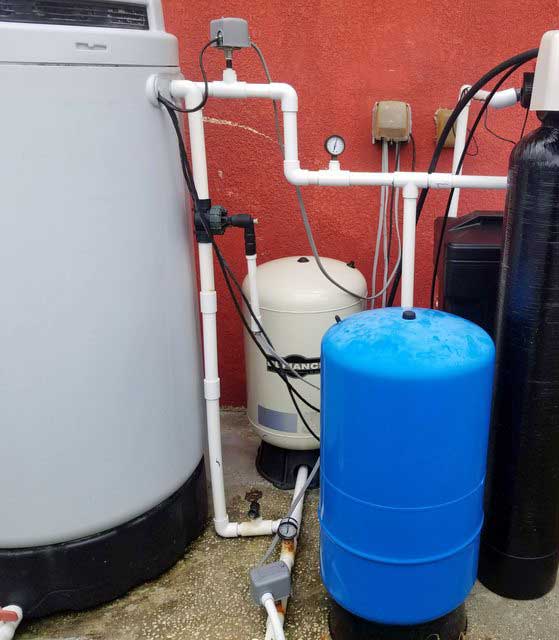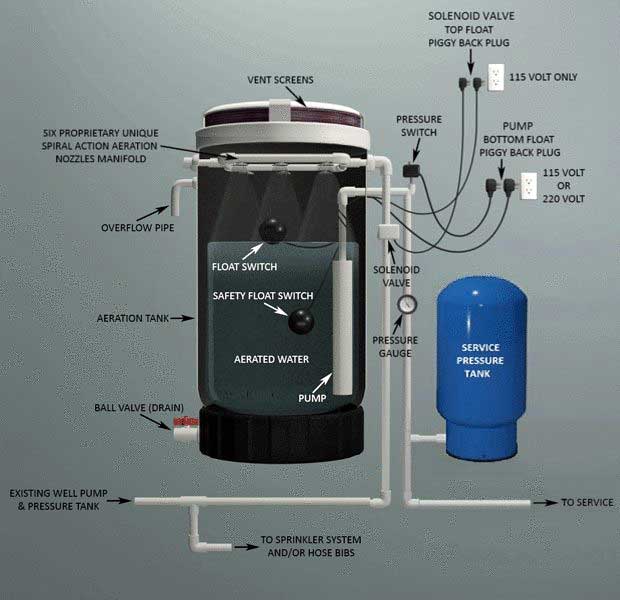An aeration tank is typically utilized as an initial water treatment device, to cause the oxidation of undesirable metals and elements within the water that are difficult to remove, to convert them to other forms which will settle out or are more easily removed by conventional filtration.
For example, if your well water were to contain ferrous iron (clear water iron), oxidation performed within the aeration tank, will convert some or all of that ferrous iron into ferric iron which is solid rust particles. Much of those solid particles will settle-out and will accumulate at the bottom of the aeration tank as debris, and any that remain suspended in the tank outflow may be easily removed by a common sediment filter.
Accumulated debris will need to be discharged from the aeration tank on a regular and ongoing basis. Elimination will be performed by opening the ball valve drain at the bottom of the tank and allowing flow until no debris remains. Has this been performed?
If debris elimination has not been performed for some time, depending on which elements are being oxidized and the quantity of each in the raw water, there may be significant debris to be removed. From your photos, I can not determine if there is any drain hose connected to the ball valve to route the discharge somewhere else such as a septic system or ditch, or perhaps into buckets so discharged debris will not accumulate below the ball valve outlet.


